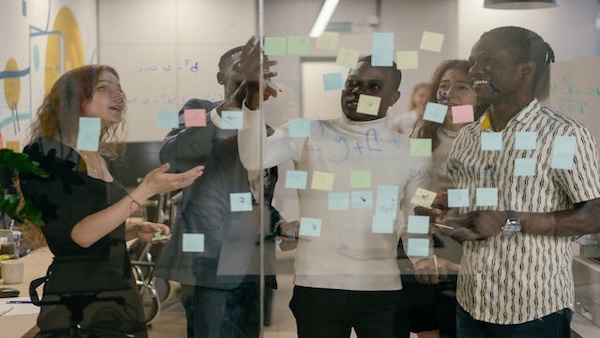How your hiring process shapes your employer brand
Most companies treat employer branding as a marketing exercise. They polish careers pages, produce glossy culture videos, and post hashtags about...
Manage your equity and shareholders
Share schemes & options
Fundraising
Equity management
Start a business
Company valuations
Launch funds, evalute deals & invest
Special Purpose Vehicles (SPV)
Manage your portfolio
Model future scenarios
Powerful tools and five-star support
Employee share schemes
Predictable pricing and no hidden charges
For startups
For scaleups & SMEs
For larger companies
Ideas, insight and tools to help you grow

Diversity and inclusion can’t be a box-ticking exercise.
Too many businesses limit their DEI efforts to recruitment targets or one-off training sessions. The result is that diverse candidates may join, but they don’t always stay because the culture doesn’t back up the promise.
To build teams that thrive, DEI has to run through the entire employee journey.
In this article, we’ll break down how to embed DEI into every stage of the employee experience so your company isn’t just hiring fairly, but building a workplace where people feel valued and heard.
Research shows that belonging is a stronger predictor of employee engagement than any single DEI initiative.
A BetterUp study found that employees who feel a high sense of belonging see a 56% increase in job performance, a 50% drop in turnover risk, and a 75% reduction in sick days.
As Verna Myers, VP of Inclusion Strategy at Netflix, famously said: “Diversity is being invited to the party; inclusion is being asked to dance.” Belonging goes even further: it’s when people feel free to dance how they want, without judgement.
Diversity gets people in the door but belonging keeps them there.
Hiring is where most companies start with DEI, but it’s also where bias can creep in fastest.
Common pitfalls include over-reliance on referrals (which replicate existing networks) and vague job descriptions that discourage underrepresented applicants.
Practical steps:
Buffer published its entire salary formula to ensure pay transparency. As a result, they attracted candidates who valued fairness and reduced pay inequities across their team.

First impressions stick. If onboarding feels exclusive or confusing, new hires quickly disengage.
Deloitte’s 2020 Human Capital Trends survey found that 79% of organisations see belonging as critical to success, but only 13% said they were ready to address it. Onboarding is one of the biggest gaps.
Practical steps:
A strong onboarding process not only increases engagement, but also retention. Glassdoor found that effective onboarding improves new hire retention by 82% and productivity by 70%.
Onboarding is about culture-setting, not just an admin task. Done well, it tells new hires that their needs are being considered.
Hiring fairly means little if progression isn’t fair. Many companies unintentionally stall diverse talent at middle levels because promotions are based on subjective impressions or culture fit.
Practical steps:
McKinsey’s Diversity Wins report found that companies in the top quartile for gender diversity on executive teams were 25% more likely to outperform on profitability.

Equity is principally about fairness, but it’s also a growth driver.
Belonging isn’t static. To sustain it, companies need continuous feedback loops so employees can flag issues and feel heard. Without this, small problems fester into attrition.
Practical steps:
Gallup research shows that organisations that act on employee feedback see 4.6 times higher engagement than those that don’t.
Atlassian, for example, runs quarterly engagement surveys and publishes key results internally to hold leaders accountable. This transparency shows employees their voices shape company decisions.
Asking for feedback without acting on it is worse than not asking at all.
Embedding DEI across the employee journey is an ongoing cultural commitment.
Fair hiring, inclusive onboarding, equitable development, and continuous feedback reinforce one another. Together, they move a company from representation to belonging.
“Leadership is about making others better as a result of your presence and making sure that impact lasts in your absence.” - Harvard professor Frances Frei
A culture of belonging ensures that improvement lasts.
Fairness at work should be designed across the entire employee experience, from the first job ad to the latest promotion cycle.
If you want to attract, retain, and empower top talent, you need more than diversity metrics. You need a culture of belonging.

Most companies treat employer branding as a marketing exercise. They polish careers pages, produce glossy culture videos, and post hashtags about...

Careers don’t always move in straight lines. At some point, every employee will hit a plateau, and experience that feeling of standing still, with no...

You’ve heard of quiet quitting. Now meet its gloomier cousin: quiet cracking.